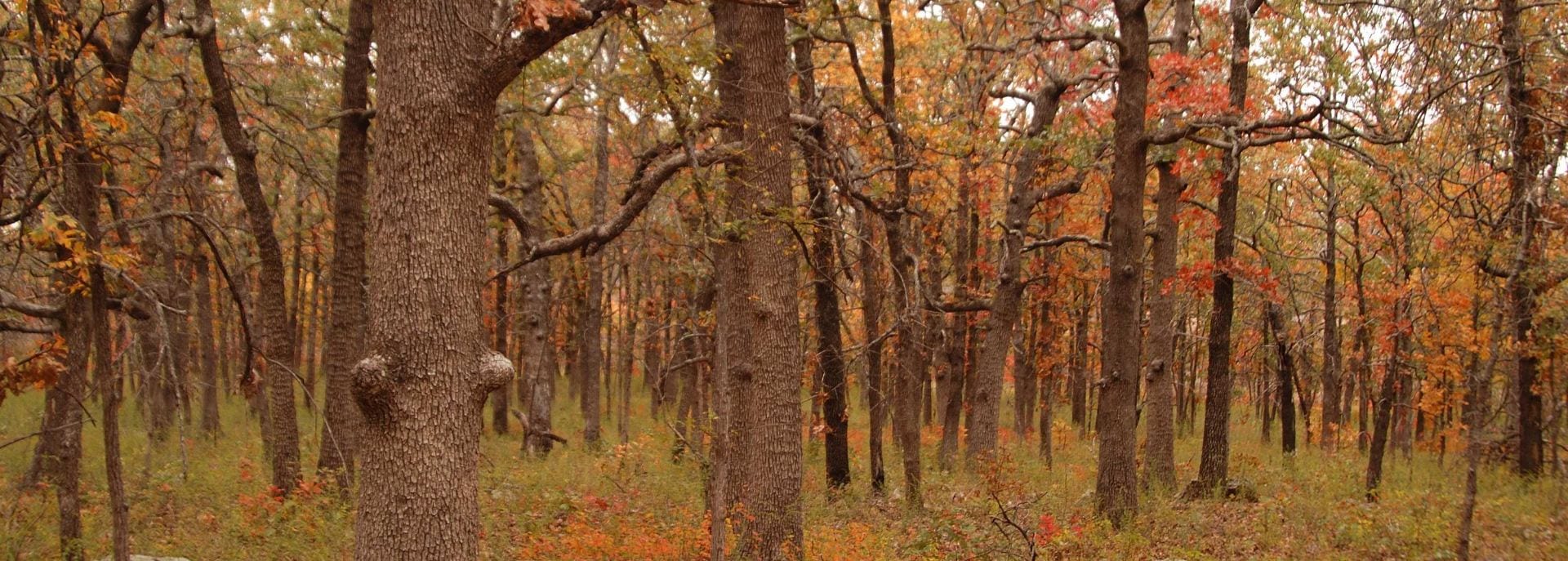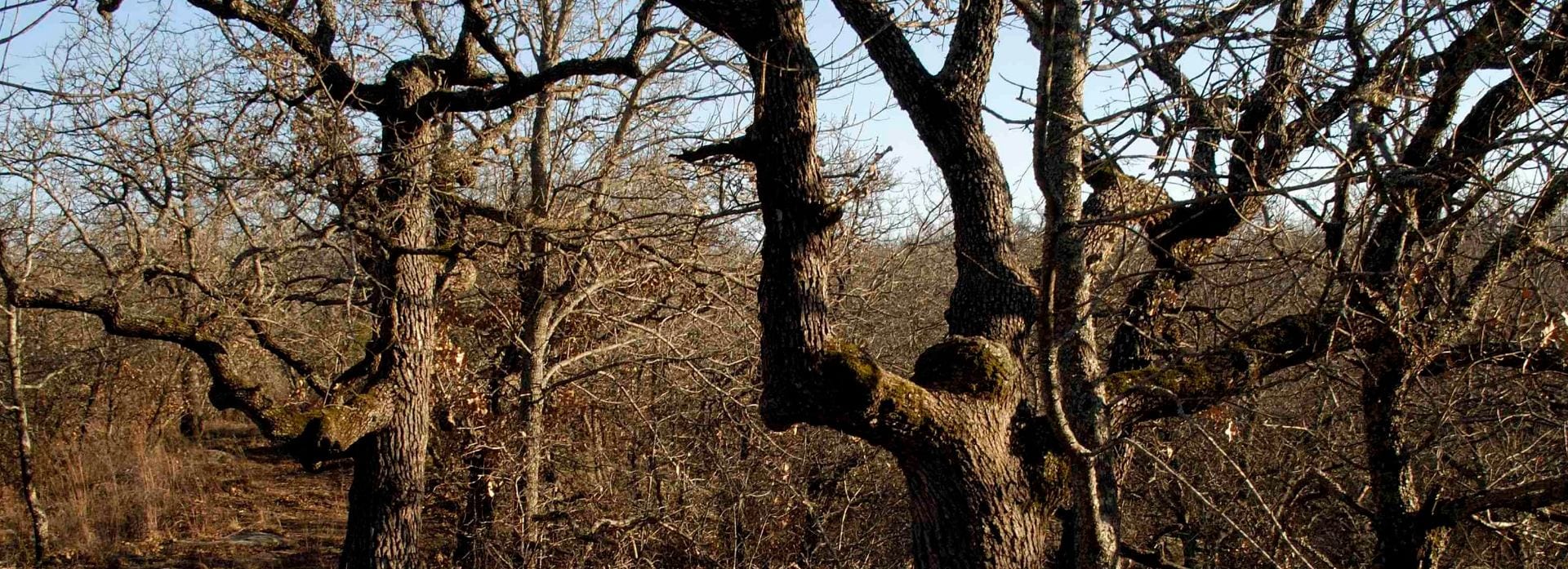
About the Ancient Cross Timbers Consortium
The Cross Timbers and Post Oak Savanna form the frontier between the eastern deciduous forest and the grasslands of the southern Great Plains. This great ecotone preserves some of the largest tracts of relatively undisturbed ancient forest and woodland left in the eastern United States, and offers an exceptional opportunity for environmental research, education, and conservation. These rugged old-growth woodlands were not commercially important, but have high ecological integrity and preserve vital components of our eroding biodiversity. They form a key link in the oak archipelago that extends from Central America into southeastern Canada, and provide essential habitat for many species, including neotropical migratory birds. The Ancient Cross Timbers Consortium has been established to unite educational institutions, government agencies, conservation organizations, and individuals around the research, educational, and conservation opportunities presented by the extensive old-growth forest remnants in this ecosystem. The Consortium has organized a unique network of cooperative research natural areas in ancient Cross Timbers remnants extending across 700 miles from southeastern Kansas to southern Texas. A memorandum of understanding (MOU) joins universities in Arkansas, Kansas, Oklahoma, and Texas with private individuals, conservation organizations, and other federal, state, and municipal agencies in this consortium devoted to understanding and sustaining the natural environmental dynamics of this native ecosystem.
This website is maintained by the University of Arkansas Tree-Ring Laboratory, and is the official home of the Consortium. Here you can access information on these interesting old-growth woodlands, read the proposal that established the Consortium (see Charter below), and view photos of the handsome old trees that lend such character to the southern Great Plains landscape. The Consortium is supported by the Oklahoma Academy of Science, the Oklahoma Biological Survey, the Nature Conservancy, the Botanical Research Institute of Texas, the Missouri Botanical Garden, the Tulsa Zoo, Austin College, the University of Central Oklahoma, University of Oklahoma, University of Tulsa, Oklahoma State University, University of Arkansas, the Texas Forest Service, the LBJ National Grasslands, and other agencies and individuals.
Ancient Cross Timbers Consortium Charter [.pdf, 1.96 MB]
